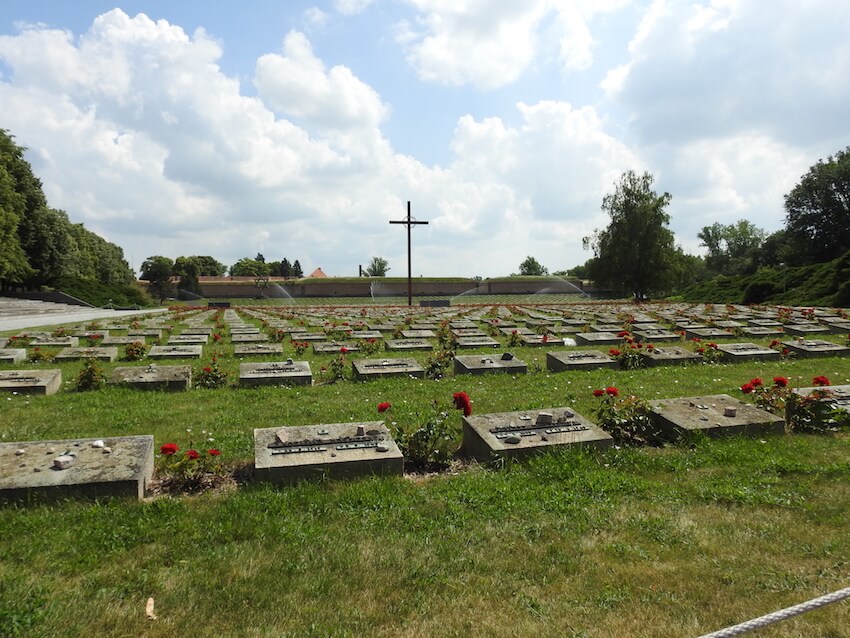 As far as concentration camps go, Terezín was remarkably elegant.
As far as concentration camps go, Terezín was remarkably elegant.
At least it was at first, this little town where 4,000 people lived in gorgeous mansions or grand terraces painted in jaunty pinks and yellows.
As more people poured in, the conditions behind those fine edifices grew squalid and deplorable. At first, Jews from nearby Prague were sent there by the Nazis, to ‘clean them out’ of the newly conquered city.
Then others arrived, exiled from Denmark, Slovakia and Hungary as Hitler’s empire expanded and Jews were forced out of occupied territories.
Rows of bunk beds were crammed into every room. More people squeezed into lofts, or lived in the basements with scant room to lie down. The water supply often petered out, food was scarce, and each toilet served dozens of people. By the time the population of this country town hit 58,000, each person had just over a square meter of living space.
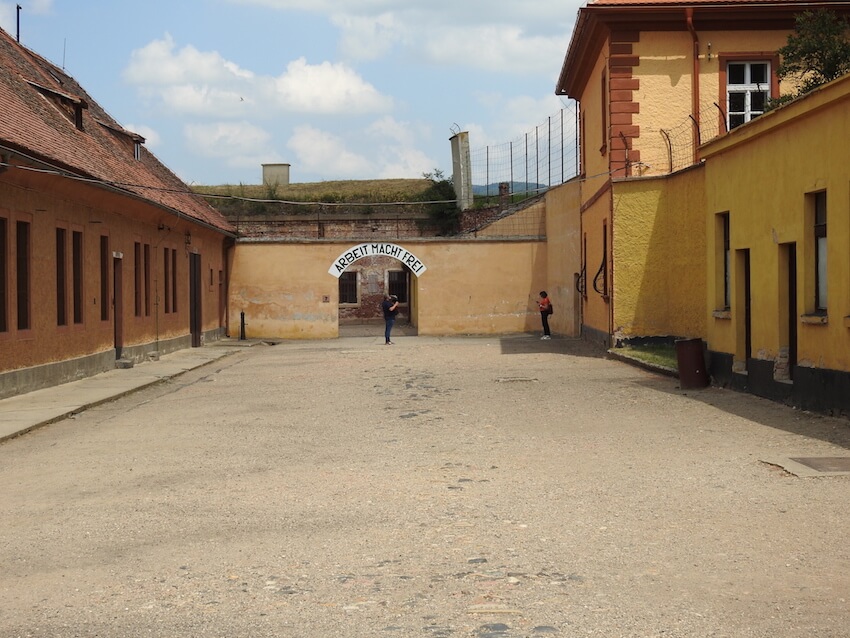 Now it’s hard to spot anyone at all in Terezín, apart from tourists and staff who run the various museums. The wide streets and squares are eerily empty, and no surprise, for who would want to live in a town that became the most unique concentration camp in history?
Now it’s hard to spot anyone at all in Terezín, apart from tourists and staff who run the various museums. The wide streets and squares are eerily empty, and no surprise, for who would want to live in a town that became the most unique concentration camp in history?
In a way, the story of Terezín is even more vital than that of the far more famous death camps. Surely we’ve learned enough from history never to let one race attempt to exterminate another, you think, perhaps naïvely. Yet Terezín is so…normal…that it could more easily be repeated. It’s a pleasant town where the Jews were initially almost relieved to go, hoping to sit out the war while Hitler raged and destroyed elsewhere.
Now it’s a popular day trip for visitors to Prague, if they tire of splendid architecture and want something more visceral. Why do we come, I wonder? Do I expect to hear ghosts? I do, I realise, as I find myself listening for a faint laboured breathe, a sigh of defeat, a groan of agony or despair. But all I hear is the scrunch of other tourists walking by, and the incessant click of cameras.
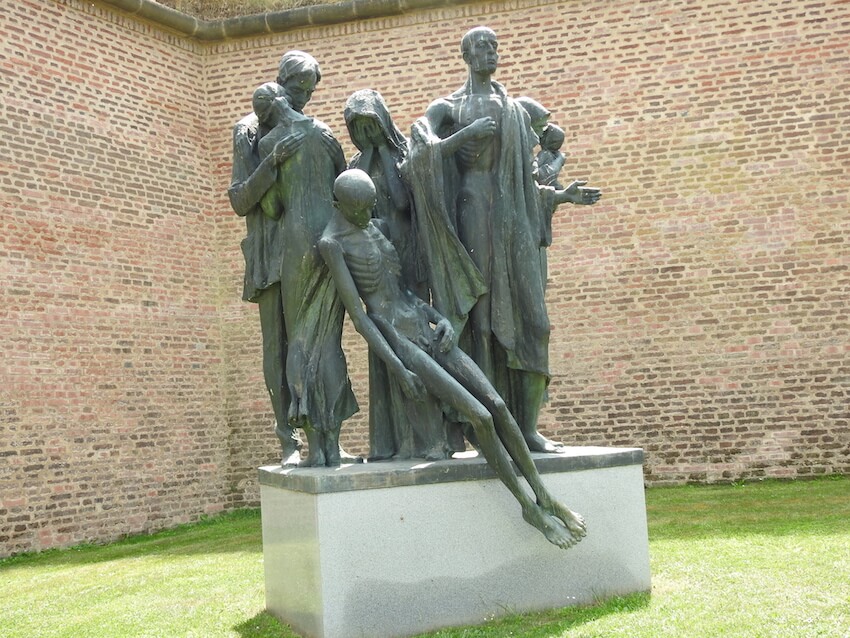 Maybe we come to commune with their spirits, pay our respects and understand what happened. To decide to speak out next time one race inevitably tries to oppress another. Heaven knows the opportunities are already all around us.
Maybe we come to commune with their spirits, pay our respects and understand what happened. To decide to speak out next time one race inevitably tries to oppress another. Heaven knows the opportunities are already all around us.
Terezín was originally built as a fortress between 1780 and 1790 by Emperor Joseph II to repel foreign invaders. But the Nazis realised this walled town designed to repel foreign invaders was ideal for imprisoning its own countrymen. They moved out all non-Jewish citizens, and used it as a holding ghetto until the extermination camps were ready.
The exterior walls were guarded once again, and rules were enforced. Inhabitants could only shop for one hour on a certain day, and sometimes couldn’t step out of the houses at all.
Then came the orders for some to leave, herded a thousand at a time to final destinations like Auschwitz and Belsen. Our guide puts chilling numbers on it, but the exhibition fills in the names and faces.
A video includes remnants of a propaganda film the Nazis made to show the world what a lovely city they had given to the Jews. The filmmaker ordered to create the movie – in return for having his life spared – was thrown onto the last train out, heading for extermination.
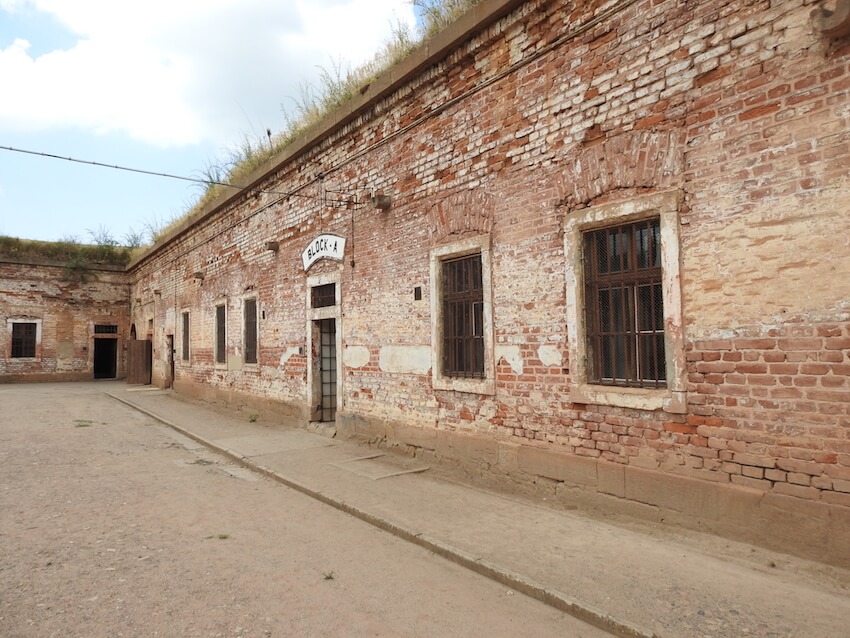 The video recites more figures. A thousand sent to one camp: three survived. A thousand sent to another: none survived. Nineteen thousand sent to another: my brain is reeling. Hearing how many other death camps there were besides the famous few makes the scale of this organised slaughter feel freshly evil.
The video recites more figures. A thousand sent to one camp: three survived. A thousand sent to another: none survived. Nineteen thousand sent to another: my brain is reeling. Hearing how many other death camps there were besides the famous few makes the scale of this organised slaughter feel freshly evil.
The record keeping was meticulous. In total, 139,667 people were exiled to Terezín between 1941 and 1945. Conditions were so appalling that 33,818 died right there. Another 86,934 were deported to extermination camps, and only 3,586 survived.
The end of the war wasn’t the end of the story. After Russian soldiers swept in to liberate the town, an epidemic added 1,566 to the death toll by killing soldiers as well as the starving residents.
We walk past a graveyard where about 10,000 people were buried. Some tombstones have names, others just a number. Large slabs of plain granite mark some mass graves.
In the Small Fortress used as a prison we see large rooms where the prisoners showered – here they really did, our guide tells us, unlike in the death camps where ‘shower rooms’ pumped out lethal gas, not water. One jail cell was literally standing room only, with 60 people shoved inside. In a solitary confinement cell I close the door behind me, and feel an icy fear of absolute darkness.
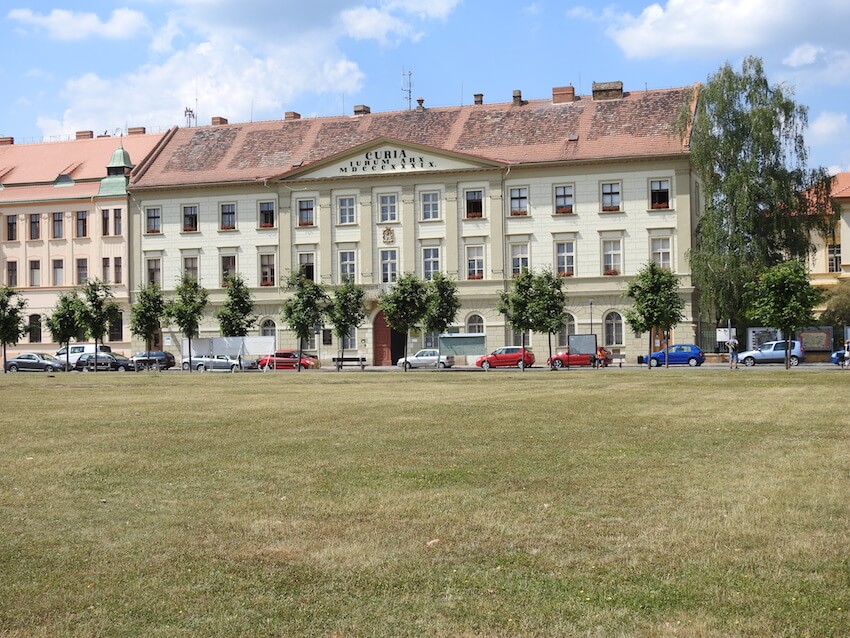 In the town itself, tannoys that broadcast orders and propaganda still hang from the lampposts. We stop at railway lines that were laid to run straight to the death camps. So much more efficient than having dozens of trucks rumbling through rural countryside.
In the town itself, tannoys that broadcast orders and propaganda still hang from the lampposts. We stop at railway lines that were laid to run straight to the death camps. So much more efficient than having dozens of trucks rumbling through rural countryside.
We reach a building that stored the urns of those who died here. So many corpses that they stopped using precious wood to hold the ashes and resorted to cardboard. When the Nazis tried to destroy the evidence by having the urns dumped in the river, the rotting cardboard fell apart, spilling ashes over the human chain passing them along.
The last stop is the crematorium, where four ovens working flat out couldn’t cope with the death toll. And this was supposedly a ‘town’, not a formal death camp.
A woman cycles by, an incongruous flash of life in the deserted streets. I ask our guide who wants to live in a place so tainted, and he’s not sure, although one historian moved in recently. Maybe the other residents had family roots here in the genteel days before its sombre history. Perhaps they’ve returned to reclaim the town, to say ‘this was ours before it was theirs,’ he ponders.
But it will be many generations before Terezín feels like an ordinary town again.